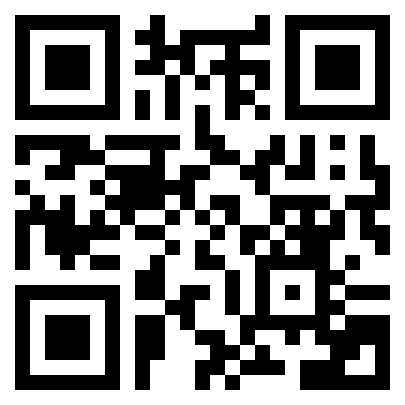- UNIT CMI 513 Managing Projects to Achieve Results Assessment Brief
- AFM5CGL Level 5 Corporate Governance and leadership Assignment Case Study
- Law, Policy and Ethical Practice in Health and Social Care Assignment 2025-2026
- BTEC International Level 3 in Business Pearson Set Assignment – Unit 7 Business Decision Making
- Unit 7 Budget Assignment: Effective Financial Planning, Budgetary Control, and Stakeholder Management in Dental Practice
- Level 2 NVQ Diploma in Specialist Concrete Occupations Assignment: Knowledge and Understanding of Health, Safety, Work Practices, and Concrete Application
- Level 4 SPS4064 Physiology of Exercise Assignment: Comprehensive Assessment Through MCQs and an In-Depth Marathon Running Case Study
- Communication Management Assignment: Monitoring, Evaluating, and Improving Workplace Communication Systems
- Unit 806 Culture and its Impact on Strategy Assignment: A Critical Evaluation of International Organisational Policy, Decision-Making & Stakeholder Dynamics
- CMI Unit 601 Professional Management and Leadership Practice Assignment – The Influence of Organisational Context on Management and Leadership
- ILM L 7 unit 700 Assignment : Understanding the Principles and Practice of Effective Coaching and Mentoring at an Executive or Senior Level
- A Comprehensive Assignment Report – Unit 804 Strategic Direction in Cross-Border and Global Business
- BTEC Unit 7 Calculus Assignment: Integration Methods, Motion Analysis, Work & Cooling Law Applications
- BTEC Level 3 Unit 7 Engineering Calculus Assignment: Differentiation Applications, Graphs & Optimisation Problems
- ILM Unit 8605-417 Managing & Implementing Change in the Workplace Assignment: Analysis, Opportunities & Action Plan
- 7NDEMP02 Patient Management in Advanced Collision Tumour: Surgical, Postoperative, and Prosthetic Rehabilitation Considerations
- ATHE Level 4 Unit 12 Web Design Assignment: CTO Birdwatching Message Board Using Full-Stack Development
- ATHE Level 4 Unit 15 Software Testing Assignment: TDD & BDD Strategies for Python-Based Medical Data Validator
- ATHE Level 4 Unit 21 Computing Project Assignment: E-Learning Platform Design & Planning for Scalable Online Education
- CMI Level 521 Assignment: DKM&X Case Study for Data-Driven Decision Making
B51EM: You will be designing the “steel jacket” part of an offshore wind turbine (typically 3MW) of the type shown in Figure 1: Advanced Mechanics of Materials 1 Assignment, HWU, UK
| University | Heriot-Watt University (HWU) |
| Subject | B51EM: Advanced Mechanics of Materials 1 |
Part 1 – Design of structure
You will be designing the “steel jacket” part of an offshore wind turbine (typically 3MW) of the type shown in Figure 1. You will be “recycling” the design procedures for such structures, developed in the 1980s for offshore oil and gas production, Figure
1.1 Sizing of tubes.
Choose a frame configuration from the 3 options in Figure 3. Select key dimensions of tower and jacket heights and sketch jacket in 2D (example representation in Figure 4, showing reactions and loads). Consider wind loading on the rotor only and use the following for the thrust force on the rotor
where ρ is the air density, A the swept area, CT, the coefficient of thrust and v the wind speed. Convert Fw into a couple plus horizontal load (blue arrows in Figure 3) and decide on what reaction types you wish to use (orange arrows in Figure 3).
Ensure that your structure is statically determinate (number of members + number of reactions = 2 × number of joints). Analyse the jacket as a 2D pin-jointed frame (truss), using your estimated values of loads (weight of tower plus turbine, green arrow and rotor wind load, blue arrows). Note that this method assumes no moments at joints (or at loading or reaction points) and, hence, that each member is either a strut (in compression) or a tie (in tension).
Classify each joint as Y, K or X, and identify chord (member carrying largest load) and brace(s). Estimate the chord wall thickness, T, from:
where P is the axial force in the brace (in N), Fy is the yield strength of your chosen material (in MPa) and β is the diameter ratio, d/D. Then, obtain wall thicknesses and diameters for each member ensuring that their cross-section remains below yield in either tension or compression (Figure 5).
Finally, identify the location and magnitude of the “hot-spot” stress range, S, as a function of wind speed, v, Figure 6. The hot-spots are in the welded intersections between the members and are the areas most prone to fatigue
1.2 Fatigue life
Using spectral fatigue analysis, determine the fatigue life at the “hot-spot” using the method published by Williams and Rinne4 . First, find a wind loading spectrum for your chosen location, and then fit the closest Rayleigh spectrum that you can. Devise a relationship of the form 𝑆 = 𝑎𝑣 𝑏using your design considerations.
1.3 Discussion
Discuss your results critically. This means that you should assess the likely effect of the assumptions that you have made, including those you have been directed to make. You should also say what additional analysis (or measurements) you would need to do to improve your confidence in the design or, if inadequate, how you would improve the design
Part 2 – Design of rotor hub
Figure 7 shows a typical large wind turbine rotor hub design, made from a cast alloy (which you are free to choose). Simplify the design so that it is a cylindrical ring and calculate a suitable wall thickness, based on the circumferential stress at your highest anticipated rotational speed. You should assume that the ring is only subject to inertial loading so that it can be treated as a rotating disc (plane stress).
2.1 Defect assessment
Use the R6 procedure to determine the largest tolerable casting defects oriented in the radial and circumferential directions, respectively.
2.2 Discussion
Comment on your results and decide on appropriate inspection procedures at
installation and in service
Use the simple cantilever model of a turbine blade in Figure 8 and assume it to be a rectangular sheet made from an isotropic material.
3.1 Displacement functions
Choose appropriate values for the elastic moduli E and ν and calculate the profile of zdisplacement as a function of y (Figure 8) up to a value of δmax at y = L. Now, introduce a twist into the blade by assuming that the z-displacement at y = L is larger than δmax at x = 0 and smaller than δmax at x = B. Finally, write down equations for the displacement functions
3.2 Distribution of strain tensor
Using your answer to 3.1, and the small strain – displacement equations in Cartesian co-ordinates, determine the components of the strain tensor in the x-y plane. The components should be expressed as functions of x and y in microstrain, thus:
3.3 Map of maximum direct strain
Using your answer to 3.2, select four points in the x-y plane and find the magnitude and direction of the maximum principal magnification factor, M1. Show these in a map of the x-y plane as vectors.
3.4 Discussion
Comment on your results, including their relevance to a realistic composite turbine blade.
Buy Answer of This Assessment & Raise Your Grades
Attention Heriot-Watt University (HWU) students! Are you in need of professional assistance with your case studies and assignments? Look no further! Our team is here to provide you with reliable case study writing help and help with assignments. Whether it’s the subject of B51EM: Advanced Mechanics of Materials 1 or any other course, we are dedicated to supporting your academic journey. Pay our experts to help you design the “steel jacket” part of an offshore wind turbine, as required in your Advanced Mechanics of Materials 1 Assignment. Our team will ensure that your assignment meets all the necessary specifications and showcases your understanding of the subject matter. Don’t let the complexity of assignments hold you back; contact us today and let us assist you in achieving academic success.




